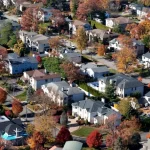

Officials in Anchorage, Alaska, are looking to open a city-sanctioned homeless camp amid a growing crisis.
Anchorage is in the top five “largely urban” areas in the United States for family homelessness and unaccompanied minor homelessness, according to the U.S. Department of Housing and Urban Development’s 2022 Annual Homelessness Assessment.
ELECTION OF GOVERNORS: GUBERNATORIAL RECORDS OF SIX 2024 REPUBLICAN PRESIDENTIAL CANDIDATES
The Anchorage Assembly passed a measure asking the city’s Republican Mayor Dave Bronson to open a city-owned lot for the encampment that could serve about 30-60 people. The resolution does not require Bronson to take action.
The move comes as cities across the country are looking at new ways to combat homelessness, including setting up planned homeless encampments to clean up sidewalks and streets.
As opposed to a tent city, Anchorage is looking to partner with a third party to provide miniature cabins as a transition to a more permanent solution. The Assembly is looking to construct a camp in July and have it run through September 2024.
The city’s resolution was written to leave bidding options open for companies to provide the shelters, but one company, the Washington state-based Pallet, is considered a strong contender.
Pallet constructs small shelters with very little storage space and without amenities to encourage short-term stays. The buildings are meant to be a step above tents on the path to more permanent housing options.
“We intentionally created it to look temporary and stripped down,” company CEO Amy King said, according to the Anchorage Daily News. “There’s no bathroom, there’s no kitchen, on purpose, so people don’t stay there forever.”
“This is not meant to be a substitute for permanent housing,” she added.
The city seeking alternatives for homelessness comes as municipal officials started clearing out a large encampment last week near where the current site is being proposed. After clearing the camp, the American Civil Liberties Union filed a civil rights challenge, arguing that cities cannot clear unsheltered homeless populations when there are no housing alternatives in the area, according to a 2018 federal court ruling.
Other attempts to move Anchorage’s homeless population have been tried as well. The Bronson administration directed the homeless population to live in a campground in the eastern part of the city after the closure of a shelter.
At Centennial Park, that site had safety concerns ranging from bears entering the campground to theft, violence, and drug overdoses.
The proposed encampment is a pared-down version of what city officials originally asked for, which was five camps across Anchorage and about 90 shelters.
Assemblyman Felix Rivera sponsored what he regarded as a more “politically realistic proposal,” which he said amounts to “baby steps that will allow us to stand something up that is realistic, feasible and timely.”
The proposal would cost the city about $380,000, but opponents say that is putting money toward a short-term solution when the city should be focused on permanent housing.
“I believe that a sanctioned camp is waving a white flag of failure,” Assembly Chairman Christopher Constant said, voting against the resolution. “We should be working on our permanent shelter. We should be working on housing $10 to every $1 we invest in shelter.”
Bronson, who supports sanctioned camps, also said the cost could be prohibitive.
“The problem comes down to money. There’s no money left to do a lot of this,” he said. “I support this, but we’ve got to look at the money now.”
Several other cities have set up Pallet encampments, with about 3,800 units built in 74 cities, according to its 2022 report, including Burlington, Vermont, Madison, Wisconsin, and Missoula, Montana.
According to the report, the shelters are designed to hold up in various weather conditions, including in the cold and in the snow, which is a chief consideration for city officials.
CLICK HERE TO READ MORE FROM THE WASHINGTON EXAMINER
The company says it has shelters with extra insulation and electric heaters, at about $12,000 per unit, which can maintain 70 degrees in minus-20-degree conditions. The roofs can also hold up to 25 pounds of snow per square foot.
The Bronson administration did not respond to a request for comment from the Washington Examiner.





